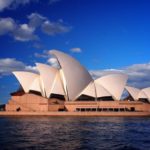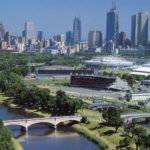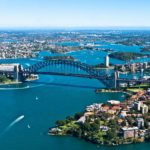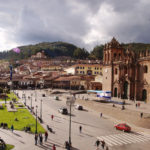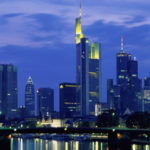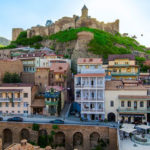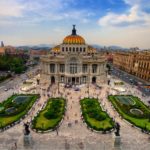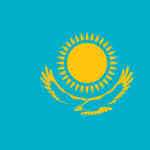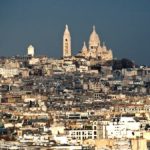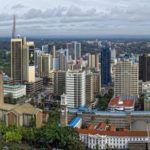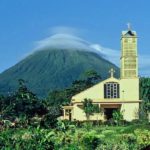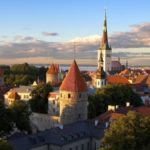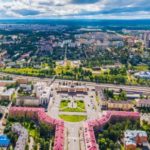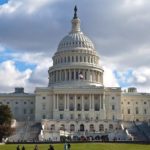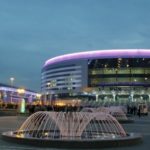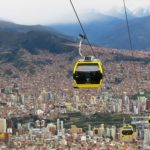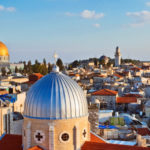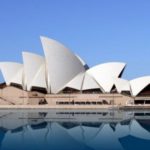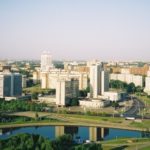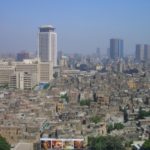The capital of Australia – Canberra
In 1901, the Australians decided to build a new capital, Australia, the city of Canberra. For nearly ten years they have chosen a place. As a result, they decided to build a new city on the way between Sydney and Melbourne in a beautiful area on the shore of an artificial lake. The name for the new capital was chosen by Canberra, which translated from the language of the aborigines means a meeting place. Like in any other capital, there is a parliament, the Supreme Court, ministries and banks in Canberra.
History of the Australian Capital – Canberra
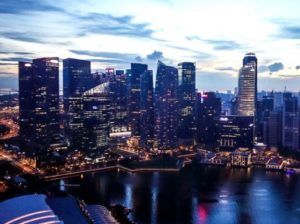 Many for some reason now consider the capital of Australia – Sydney, and some even call Melbourne. And this is absolutely not true, although it could be so. These cities are the largest in Australia, not only in terms of population, but also in the location of the cultural centers of this southern continent. Both of them, both Sydney and Melbourne, claimed the right to be the capital, but after the proclamation of independence of Australia in 1901, the Australians decided to build a completely new city for their capital.
Many for some reason now consider the capital of Australia – Sydney, and some even call Melbourne. And this is absolutely not true, although it could be so. These cities are the largest in Australia, not only in terms of population, but also in the location of the cultural centers of this southern continent. Both of them, both Sydney and Melbourne, claimed the right to be the capital, but after the proclamation of independence of Australia in 1901, the Australians decided to build a completely new city for their capital.
A special international competition for the best design of the future capital was announced. Won his American architect and designer Walter Burley Griffin. By the way, for his project Griffin received 1,750 pounds and three shillings.
The government of the country, Walter Griffin, was officially appointed the general director of the design and design of the capital and under his leadership a new city was being built. In general, the concept of Griffin’s planning and design was retained, although the project was slightly modified during construction. Griffin was greatly annoyed by the fact that his brilliant idea was not realized, and left Canberra in 1920, but the city continued to be built and developed. Already in 1927, the first meeting of parliament was held in Canberra. But it took many more years to make the city look like what Walter Burley Griffin wanted to build.
Long chose a name for the new capital. There were many options, such as: Kengurama, Engirskot, Melandiperbane, Sidmeladperbryxho, but stopped at the suggestion of Lady Denman, the wife of Australian Governor General Lord Denman, to name the new capital Canberra, which means “meeting place” or “meeting place” in Aboriginal language . Since then, every year on the second Monday of March, Canberra Day is celebrated.
So now looks Kurrajong Hill, which is now called the Capitol Hill, where on March 12, 1913, Lady Denman officially announced the name of the future capital of Australia.
Canberra’s layout is very reasonable and thought out. This is truly a business city providing its residents with excellent living conditions. The center of modern Canberra is divided into two perpendicular axes: the water axis stretches along Lake Burley Griffin. And the land axis runs from the south-west to the north-east from the parliament building to Mount Ainsley, at the foot of which is a war memorial. The city consists of two sectors – the northern, where the commercial part is located, and the southern – Capital Hill, where the Australian Parliament building is located on the Kurrajong Hill. Government center and residential neighborhoods connect a network of highways. Moreover, they are pre-designed so as to ensure their high throughput. Even with the increase in the number of residents several times there will not be traffic jams.
The central part of the city, known as the “parliamentary triangle”, is formed by three broad streets: Commonwealth Avenue, Constitution Avenue and Kings Avenue. The city has a zonal structure, in which, in addition to the city center, seven districts are clearly identified, which in turn is divided into districts. Each district has its own public and commercial centers. The location of suburbs, nearby villages and industrial areas has been determined. None of them interferes with the other, and at the same time they have a well-established system of interaction. Moreover, they are built up and settled not chaotically, but systematically with a uniform load of urban communications, which are constructed before the construction of the district begins.
- North Canberra County consists of 15 districts built from 1920 to 1960.
- South Canberra County consists of 12 districts and settled for 40 years from 1920 to 1960.
- District of Woden Valley, 13 districts, settled in 1963.
- Belkonnen County, 25 districts, first settled in 1967.
- Weston Creek County, 8 districts, settled in 1969.
- Tukkeranong District, 19 districts, was settled in 1974.
- District Kungahlin, 7 districts began to be settled since 1990. At present, it is expanding.
The counties of North and South Canberra are built according to the plan of Walter Burley Griffin. In 1967, a special commission for the development of the capital adopted a Y-plan plan for the future development of Canberra. New residential areas are built around a series of “urban centers”, which again are connected by high-speed motorways. On the plan, it looks like the letter Y, at the base of which is located Tukkeranong district, and at the ends of the branches of Belkonnen and Kungahlin district.
Almost all districts have their own large shopping centers, which serves several districts bordering each other, although there are many shops, cafes and boutiques in the districts themselves. Schools, children’s and health facilities, utilities are usually located near shopping centers. It is noteworthy that Australians cherish their history and that is why many areas of Canberra are named after the former prime ministers of Australia, famous people of the country, or early settlers who inhabited these lands. This is a kind of fountain-monument to Captain Cook.
Canberra’s development, all urban planning and land use issues are controlled directly by the government. Everything is based on cash payments. Thus, the land on which Canberra is located is leased from the state for a period of 99 years, and the city authorities contribute the cost of rent to the budget of the national government.
Canberra is a very green city. Incompletely four hundred thousand residents of the capital, accounts for more than 8 million trees. Green areas inside the city organically fit into the natural landscape of the area and give it a unique look
Attractions of Canberra
Canberra’s attractions are: the national library, the national gallery of Australia, a large number of museums. Australians have not forgotten about the rest. There are many different cultural and entertainment centers, parks, sports complexes and wonderful places for recreation in the suburbs.
In each district there are such stadiums and sports complexes, in which not only various sports events are held, but all residents of the city can play sports.
Racetracks are equipped along the reservoirs, and the reservoirs themselves are used by water sports enthusiasts, of whom there are a lot of them.
So Canberra – has become an illustrative model of urban planning, a real city of the future.
